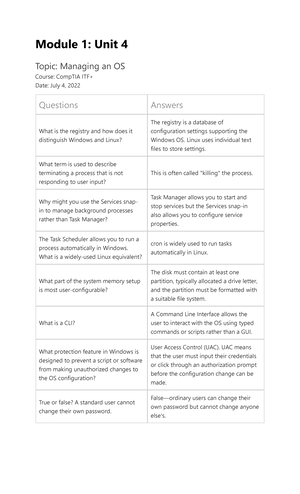- Information
- AI Chat
Was this document helpful?
What is System?
Course: BS Computer Science (BSCS)
225 Documents
Students shared 225 documents in this course
University: University of Perpetual Help System DALTA
Was this document helpful?

Asynchronous activity 1.1
Answer the ff:
1. What is a system?
A system is a collection of interconnected or interacting elements that follow a set of
rules to form a coherent whole. The limits, structure, and purpose of a system, which is
surrounded and influenced by its environment, are described and expressed in its
functioning.
2. What are the components of a system?
Hardware, software, databases, networks, and people are the five main components of
an information system. Input, process, output, feedback, and control are all handled by
these five components.
Input/output devices, processors, operating systems, and media devices make up
hardware. The term "software" refers to a collection of programs and operations. A
database is a collection of data that has been organized into the needed structure. Hubs,
communication media, and network devices make up a network. Device operators,
network administrators, and system specialists make up the workforce.
Input, data processing, data storage, output, and control are all parts of information
processing. Data instructions are sent to the systems during the input stage, while
software programs and other applications work on them during the process stage. Data
is presented in an organized format and reports during the output stage.
3. What is system analysis and design?
System analysis and design are concerned with the planning of the development of
information systems by comprehending and specifying in detail what a system should
perform, as well as how the system's components should be implemented and interact.
4. Discuss the different phases of system development life cycle.
Users can use the system-development life cycle to turn a newly designed project into an
operating one.
The System Development Life Cycle, or "SDLC," is a multistep, iterative process with a
logical framework. This procedure is used to model or give a framework for technical
and non-technical operations in order to provide a quality system that meets or exceeds
a company's expectations or to manage the decision-making process.






